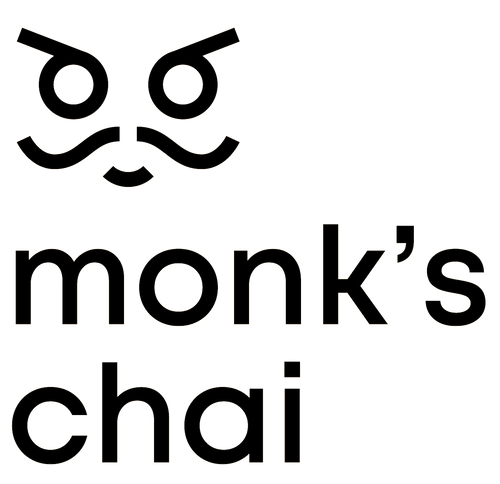If you’ve ever stood in your kitchen or hovered over the kettle wondering should I make a chai or a matcha today? — you’re not alone. These two lattes have been growing in popularity for years now, especially as more people look for alternatives to coffee.
Both are comforting. Both are packed with flavour. And both have unique health benefits. But when it comes to chai latte vs matcha latte, how do you know which one is better for you?
Let’s unpack the differences — from taste and ingredients to caffeine and calories — so you can sip with confidence.

Chai Latte vs Matcha Latte: What’s The Difference?
What Is a Chai Latte?
A chai latte is a creamy, spiced drink made from black tea, milk (usually steamed), and a blend of warming spices like cinnamon, ginger, cardamom, and cloves. The word chai actually means tea in Hindi — and in India, it’s more commonly called masala chai, which just means spiced tea.
Chai lattes served in cafés often use a pre-made syrup or concentrate, which is sweeter and sometimes milder than traditional homemade versions.
For more details: What is Chai: All Things You Need To Know
What does chai taste like: Chai has a rich, sweet and spiced flavour. It’s warming, comforting, and sometimes has a bit of a peppery kick. If you like things cosy and a bit bold, chai is the one.
What Is a Matcha Latte?
A matcha latte is made with matcha powder, which is just finely ground green tea leaves. You whisk it with a bit of hot water, then top it up with milk — dairy or plant-based — to make a latte.
What does matcha taste like: Matcha has a more earthy, grassy flavour, and some people find it a bit bitter or “green” at first. The taste can mellow out depending on the milk and any sweetener you use. If you’re into subtle, smooth flavours, matcha’s worth a go.
Fun fact: With matcha, you’re actually consuming the whole tea leaf, not just steeping it. That’s why it’s higher in antioxidants and has a different caffeine effect compared to regular green tea (1).
Explore the best of both worlds with this recipe: Matcha Chai Latte Recipe
Caffeine in Matcha vs Chai: Which One Has More Kick?

If you’re looking for a bit of energy without going full coffee-jitter, both chai and matcha can do the trick — just in different ways.
-
Matcha contains between 19–44 mg of caffeine per gram, which translates to about 38–176 mg per cup (2)
-
Chai (from black tea) usually contains around 30–50 mg per cup, depending on how strong you brew it.
So when it comes to caffeine in matcha vs chai, matcha wins for volume. But that’s not the full story.
Matcha also contains L-theanine, an amino acid that works with caffeine to give you a calmer, more focused boost — without the spike-and-crash (3), (4). Chai, on the other hand, delivers gentle, steady energy, thanks to the black tea and the naturally stimulating spices like ginger and cinnamon.
Explore more: Does Chai Have Caffeine?
Calories in Chai Latte vs Matcha Latte
Both drinks can be healthy or indulgent — it depends how they’re made.
-
A café chai latte with full-cream milk and sugary syrup can sneak up to 250 calories.
-
A homemade chai with plant milk and no added sugar can be 70–120 calories, easy.
-
Matcha lattes made at home (with unsweetened milk) sit around 60–100 calories.
-
Add syrups or honey and that can jump to 150–200+.
So in terms of chai latte vs matcha latte calories, matcha usually has fewer, but a plain homemade chai can be just as light — and more satisfying if you’re after something warming.
More details for chai calories: How Many Calories in Chai Tea - A Brief Guide
Which One Should You Choose?
There’s no right or wrong here — it really comes down to what your body (or mood) needs.
-
Need steady focus or mental clarity? Try a matcha latte — the caffeine + L-theanine combo is great for concentration.
-
Need something to settle your stomach or warm you up? Chai wins here — the spices are known to support digestion and circulation.
-
Low caffeine tolerance? Go for chai, or even a decaf chai blend if you're really sensitive.
-
Cutting back on sugar or calories? Matcha with oat milk or almond milk is usually lighter.
-
Want bold flavour and a cosy vibe? Chai’s your pick — no competition there.
Final Thoughts: Chai or Matcha – It’s All About the Mood
Some days, you want something earthy and grounding — matcha’s perfect for that. Other times, you just want a warm, spiced hug in a mug — and that’s when chai shines.
There’s no better or worse, just different moods, flavours and functions. And honestly, having both in your kitchen gives you options.
If you’re thinking of giving proper chai a go (not the syrupy stuff), check out Monk’s Chai. We offer pre-made wet chai mix in small-batch, proudly made in Australia, and actually lets you taste the spices — the way chai’s meant to be.
*Reference list:
(1) Sielicka-Różyńska M, Isik E and Szulc J (2020) ‘Comparison of phenolic content and antioxidant activity of matcha, green leaf and white leaf tea infusions, Bulgarian Journal of Agricultural Science, https://www.agrojournal.org/26/06-28.pdf
(2) West M (2023) ‘Does matcha have caffeine in it?’, Medical News Today, https://www.medicalnewstoday.com/articles/does-matcha-have-caffeine
(3) T Giesbrecht, J A Rycroft, M J Rowson, E A De Bruin (2010) ‘The combination of L-theanine and caffeine improves cognitive performance and increases subjective alertness’, Nutri Neurosience, https://pubmed.ncbi.nlm.nih.gov/21040626/
(4) Dietz D and Dekker M (2017) ‘Effect of Green Tea Phytochemicals on Mood and Cognition’, Curr Pharm Des, https://pubmed.ncbi.nlm.nih.gov/28056735/

